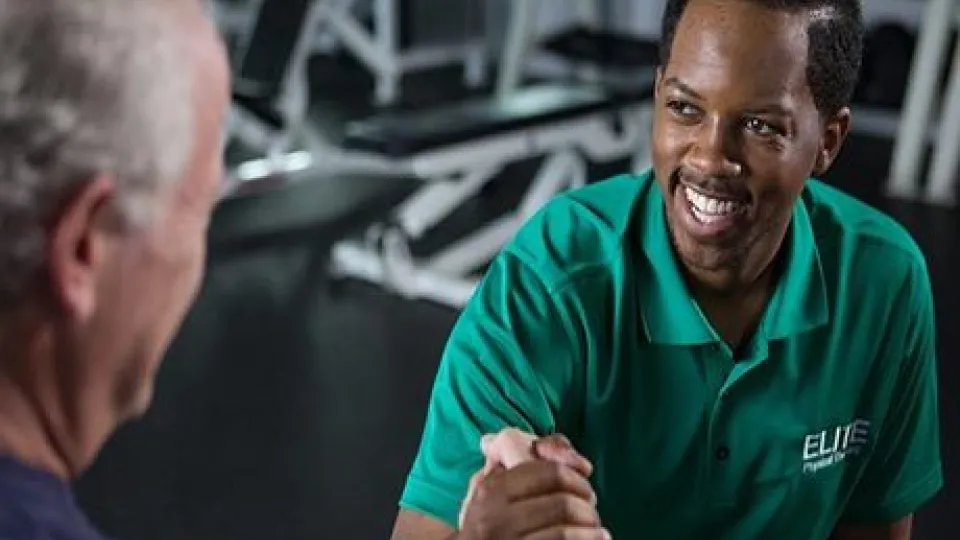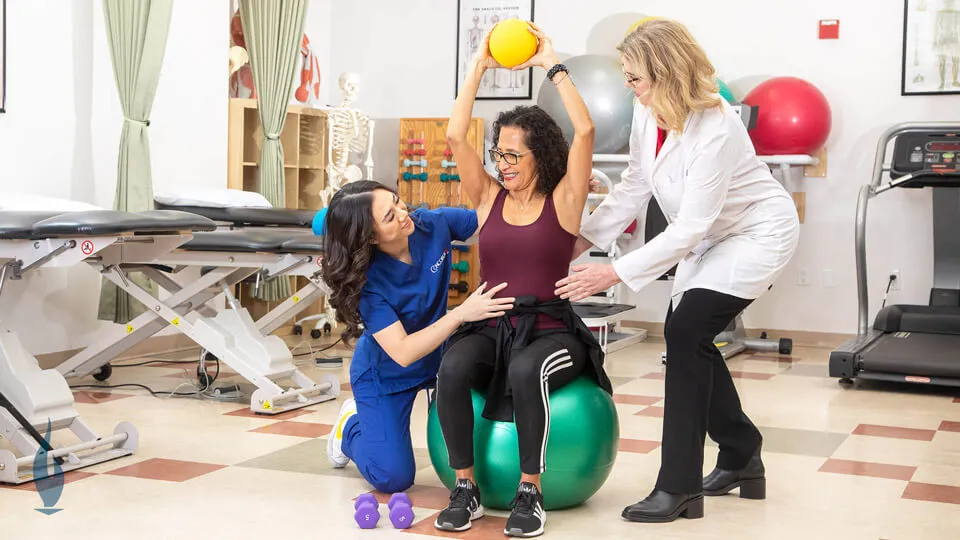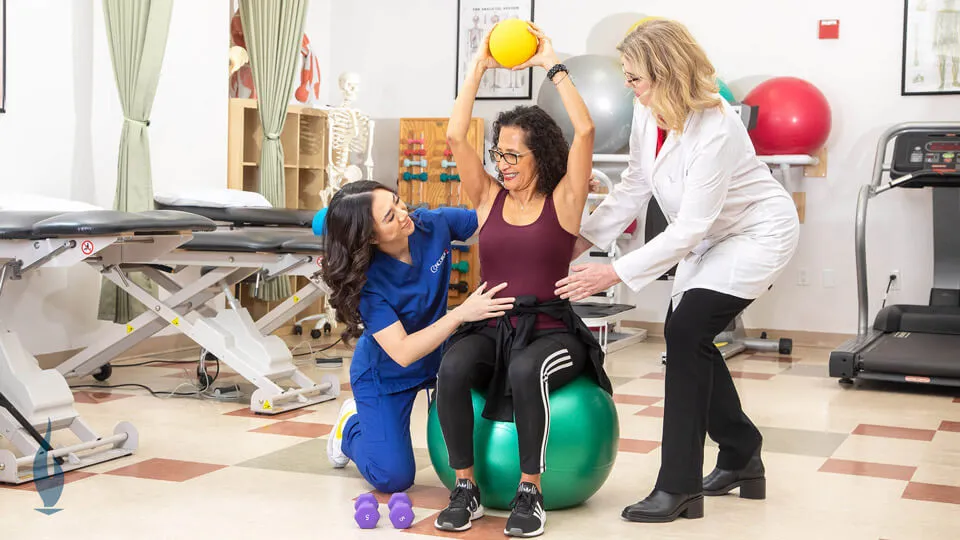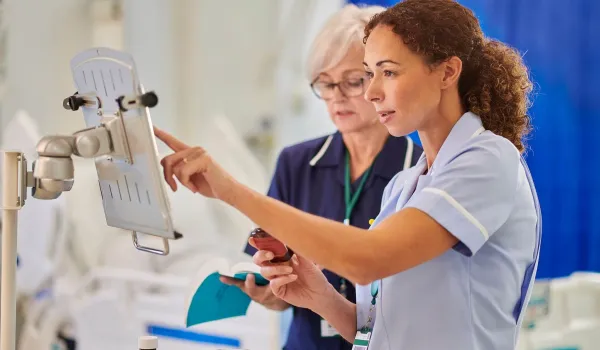
Interested in pursuing a new career that makes a difference? If you enjoy active work and love to help others feel better, consider training to become a physical therapist assistant (PTA). PTAs work under the direction of physical therapists to help patients recovering from injury or illness. By leading patients through exercises and stretches or providing other treatment, PTAs can help restore mobility and relieve pain.
In this article, we'll take a look at some of the duties and responsibilities PTAs carry out every day. We'll also give you some insight into how you can get started training with Concorde!
Job Outlook for Physical Therapist Assistants
In addition to offering a fast-paced work environment and the opportunity to serve patients, a career as a PTA has a good job outlook. Experts predict rising demand for health care, including physical therapy services, as the baby boom generation continues to age.
According to the U.S. Bureau of Labor Statistics, job openings for PTAs are projected to grow by 26% nationally over the 2022-2032 period.
Where PTAs Work
Where do Physicals Therapist Assistants work? PTAs usually work in outpatient clinics or rehabilitation centers, where patients arrive, receive treatment, and return home on the same day. These clinics can be stand-alone physical therapy practices or based within a hospital. PTAs who work in clinics of this type tend to work closely with the physical therapist and have fairly predictable daily schedules, since patients usually book in advance at these practices. According to the U.S. Bureau of Labor Statistics, 45% of PTAs worked in a clinical setting like this in 2022.
Some PTAs work in home care supporting elderly patients or people with disabilities. PTAs also work in long-term care facilities, including nursing homes, skilled nursing facilities and hospices. In these settings, PTAs may not always have the physical therapist on site to refer to. They may also work in more of an "on-call" model, going from patient to patient to help with issues that arise, in addition to providing treatment for patients who already have care plans in place.
Other PTAs may travel as part of the physical therapy staff for a sports team or other performing group. For this article, we'll follow along with a PTA who works in a clinic.
Preparing for Appointments
At the start of the day, a PTA will consult the physical therapist in order to see who is on the appointment list. The physical therapist will go over what is known about new patients and review care plans for existing patients. This way, the PTA can ensure that treatment areas are set up with the proper equipment for each patient. They may complete this setup themselves or supervise the work of aides if the practice has them.
In a typical physical therapy clinic, almost all patients will have booked their appointments in advance. Appointments will last 30 to 60 minutes, with some time in between patients to clean and re-arrange equipment, plus a lunch break. Most clinics are open during regular business hours, so a PTA who works full-time can expect a busy- but also pretty predictable- day.
Working with New Patients
The PTA may help new patients fill out paperwork before they enter the treatment room. They may take basic vital information (height, weight, and blood pressure) from the patient if there isn't an aide or medical assistant at the practice. PTAs may observe and assist as the physical therapist evaluates the patient and makes a diagnosis. They may take range-of-motion measurements or keep records.
Once the physical therapist decides on a care plan, the PTA may be asked to demonstrate stretches, exercises or the use of props, such as crutches, to the new patient. They may also help with setting a follow-up appointment.
Helping Existing Patients
Existing patients will come to the PTA to complete exercises or receive massage, ultrasound, or other treatment. Depending on the patient's issue, the PTA may help with:
- Gait training - helping people with leg, hip and spinal injuries learn to walk again, either on level surfaces or on stairs
- Transfer skills - moving in and out of a wheelchair, for example
- Props and prosthetic skills - teaching patients to use crutches, wheelchairs, walkers, and artificial limbs
- Therapy exercises - stretches and strengthening moves that may involve props like exercise balls, resistance bands, and weights
- Massage therapy - manipulating a patient's soft tissue to relieve pain or increase blood flow
- Other therapies - PTAs may provide treatment with heat, cold, water or ultrasound, depending on the patient's issues and the care plan
The PTA may also spend time asking the patient or their caregiver about conditions at work or home which may have an impact on their treatment- for example, asking if a patient with back problems has a mattress or office chair which could be contributing to pain. Finally, they will evaluate how the patient is progressing, record their progress, and suggest care plan modifications to the physical therapist, if appropriate.
Wrapping Up the Day
At the end of the day, PTAs will help return equipment to storage. They'll also complete any record-keeping duties related to the patients they saw that day. They may also meet with the physical therapist to discuss patients' progress and update care plans if needed. Then, they will head home for a well-deserved rest.
Training to Become a Physical Therapist Assistant
If you want to be a PTA, you will need to be able to handle a job that can be very physically demanding. You'll spend most of the day on your feet. You'll perform exercises, give massages, and lift, support or move patients regularly. You will also need to have a positive attitude, patience, and the ability to coach others through reluctance or discomfort.

How To Become a Physical Therapist Assistant
You will also need training. Most states require PTAs to hold an associate degree from a program accredited by the Commission on Accreditation in Physical Therapy Education (CAPTE). At Concorde, a CAPTE-accredited associate degree program is offered at several of our campus locations that is designed to teach you the knowledge and clinical skills you need to transition from the classroom to pursuing a physical therapist assistant career.
Courses cover anatomy, physiology and the needs of special patient populations, such as elderly people. You'll receive hands-on training in massage and other treatment practices in the classroom, and then put your skills to work in clinical experience settings.
Depending on the campus location you choose, you can complete your degree in as few as 19 months. Find out more about training to become a PTA with Concorde today!
Interested In How To Become a Physical Therapist Assistant?
Click here to explore Physical Therapist Assistant Programs near you!
Take The Next Step Towards a Brighter Future
Interested in learning more about our Physical Therapist Assistant program?
We have a Concorde representative ready to talk about what matters most to you. Get answers about start dates, curriculum, financial aid, scholarships and more!







